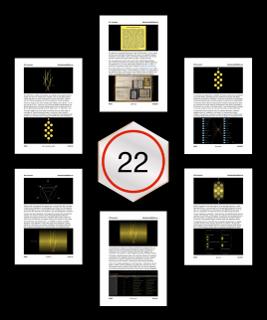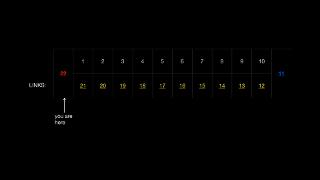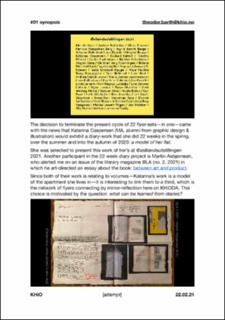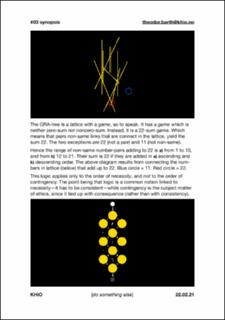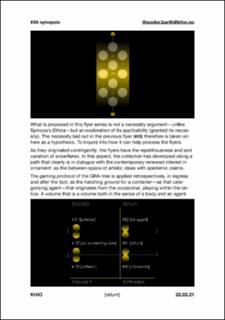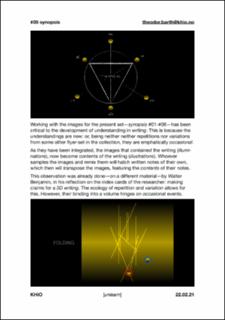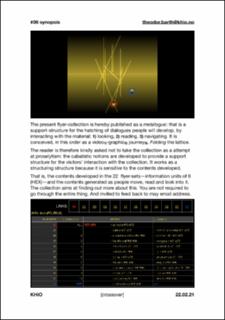| dc.description.abstract | [ENTER: click file NAVIGATION EXHIBIT]
NB! It is recommended that you read this collection online. If you download it you are enjoined not to delete it.
EXPERIMENTAL MEREOLOGY
—A theoretic activity in artistic research
[link: all sets can be accessed from flyer #06 in this series/SYNOPSIS]
Mereology is the study relations between parts and whole. It is experimental when what holds the parts and the whole is discovered, rather than argued or demonstrated.
The present query therefore is neither discursive nor abstractly logical. Rather, the present experimental activity delves into concrete things that have a logic of their own.
Consider a photo. To the photographer it may provide evidence, but its documentary value can be insecure and debatable to everyone else. What is missing?—the site.
Hence, the question: what is the contribution of the site to the whole experience of the photographer, and the fragmentary impression it regularly leaves to others?
The castle, the mountain the city. Illuminating the memory, illustrating its record. The relation between whole and part is makeshift, and tricky. Fort—da!
It can be mended by the detail of framing. By notes and inscription. Partly objective, partly subjective. Or, so it would seem. So long the place no longer is on site (in situ).
The location is never completely subjective nor completely objective. What is the place in loss of the site, the sense of location feeds on the affect. Bodies, agency and objects loosely connected.
(…the strength of loose ties…)
For this reason, the letter K is chosen—or rather: K.
—K. the geometer in Kafka’s novel The Castle [who is named K. by Kafka]
—K. the geologist B.M. Keilhau [who named himself K.]
—K. the envelope in Walter Benjamin’s Arcades Project [awakening from an initial sleep]
Benjamin envelope is dedicated to the Dream City and Dream House, Dreams of the Future, Anthropological Nihilism, Jung. This is K. But K. is also the fieldworker. And K. is drawn into the gravitational field of the Castle. We are at the point of exit from this modern symbolism.
The ledger that will never more than almost add up, and will give the account a slip at the last moment. And growing wise from the pranks of the trickster, we can settle for hybridity, quasi-objects and heterotopia. Or, we may go beyond the matchmaking symbol [symbolon].
Tired from failed promises of a holistic tight fit, we may move from the symbolon to the synolon.
Leaving the whole as parts stamped—as it were—into each other, for the form as it came out: a detail of the cover of a book that brought its parts together. The day you acquired that book.
A day in your life, that somehow became the day that you acquired that book. This is the synolon: compound matter and form. It never yields a tight fit, and its precision therefore lies elsewhere. What binds the whole lies in its enigma: not the problem it solves, but the question it raises.
—K. as in Kafka’s novel: the Castle is the receding horizon of K.’s job-assignment as a land surveyor (geometer), the assignment is real but never confirmed. The ambivalent, alien and anonymous face of power. The halls of memories we cannot have. The novel was never completed.
—K. as in Keilhau: the geologist of the early 19th century to whom the knowledge of the mountain (geognostics) was in the mountain, both in the sense that extended fieldwork requiring time spent in the mountain—walking and drawing—and in that geology was an historical science (geognostics).
—K. as in the envelope of the arcades project which Walter Benjamin dedicated to awakening, both in the sense of generations awakening and the several awakenings occurring in the life-time of each and every of us. The Romantic era as something else than the stowaway of modernism.
These are the occasional elements that rather constitute a modern surge, beyond being a promise and opportunity for to move out of their station in traditional society. A take on the new, in its own right, that would remain critical of the pledge to its commercial application.
How to look back without reactionary nostalgia? The query into the past as an awakening to the present, is the dialectical option laid out by Walter Benjamin. A transmodern proposition similar to the present errand of query into an experimental mereology: the relation between part and whole.
The arduous path towards catching the whole in a glimpse, from the shards and fragments of a new—a sense of novelty—differing from mechanical reproduction, and the importance of the occasional event in constituting the relation between part and whole in local history.
To Spinoza a common notion is one that is not abstract and tangential to the real, in a relationship that may/not be adequate. It informs his inquiry in his magnum opus Ethica, and features his idea of geometry as the protocol of propositions that are subject to the requirement of proof.
Here, common does not mean widespread but refers to notion that may be common to the imaginary and the real. They hinge on proof rather than on commonality in the ordinary sense. And are occasional in the same sense that Benjamin’s flashes of historical insight are time-local.
Spinoza’s proofs are of a logical kind. They are revealed. Perhaps in a way similar to fieldwork, prolonged study and survey. They bring agency into the edifice, and are not common in the sense of embodied. They do not come about through the grooming of presence and attention.
Hence their dialectical nature, pertaining as much to the dialectics of nature in his work as to the nature of dialectics. The proof, in Spinoza’s sense, therefore is neither necessary nor contingent, but occasional. They are neither repetitious nor variable. But hold thought and extension.
The importance attributed to the occasional in the experimental mereology proposed here, reside precisely in its ability to hold—or, bind—the parts to a whole, in a non-abstract way, relating specific subject matters and subject to precisation. It is en experimental query on the metalogue.
That is a process of communicative interaction hinging as much on the evolving affordances of a support-structure as the contents of a dialogue. The image can be a container with an organising impact on writing. And it can be a content contained by writing. But it does not bind anything.
The occasional features the events through which parts and whole are bound. Occurrences with a categorising trail that constitute the subject matter of diaries rather than literary fiction or scientific prose. They are the equivalent of the essay in the world of objects: boundary objects.
When the site is lost to the photograph the unity of time, action and place are no longer given. But the reader of the photograph be present to it in her own time—embodied—she can develop agency in which the photo is involved, and will occasionally bind the whole in which it is held.
The occasional—in the present attempt—features the difference between design and accident. Design is never accidental, but is locally concrete as it hatches from between contingency and necessity. The present collection of 22 flyer-sets features such a local hatching space.
For a reader to jointly hold thought and extension the subject matter cannot only be be/spoken, it must somehow be done. This performative summoning is ethical in that precise sense. To read something—in this expanded sense—it in aspects to be a) created, b) inhabited.
And it is in this exact sense that reading affords criticality, and that in hatching new repertoires a reading becomes precise in that very same moment. And also, dear reader, that the events of your life holds the occasional capacity to bind the parts into a whole, if there is a model to support it.
—
FACTS:
The collection contains 22 sets with 6 flyers each. The sets are conceived as information units. 1 set = 1HEX. The sum total of flyers is 132. Evidently, it is a number divisible by 11. 132 : 11 = 12. Each flyer has two images each. The collection has a sum of 264 images. References in url.
The activity was initiated after a 22 week project with 2 MA alumni from graphic design and illustration—Katarina Caspersen and Martin Abjørnsen—during which we discussed each our diary entires in weekly Zoom meetings. The meetings took place late spring-early autumn 2020.
The project is outlined in several occasions in the 22HEX collection. The question I asked was: can the flyer-sets result in a volume larger than and different from the sets? What would bring beyond the sets. The idea of experimental mereology came from a work on Kielhau’s drawings.
That is, the first Norwegian geologist’s drawings from a journey to the Jotunheimen mountains in 1820. An early example of what we call a research portfolio in the design MA, the collection of 30—including two paintings of Carpelan’s and a map—to his friend Christian Péter Bianco Boeck.
The invitation to work on the materials from the mountain journey came from the National Library that came towards the end of the activity with the flyers as a modular diary reflecting the conditions of the Covid19 pandemic. It is not a project, but rather the outcome of a sustained field research during on and in the lockdown. Owing to Bojana Kunst’s critique of the project as a framework for artistic research. And to the fact that the project of developing a book in diary writing in AR-time at design. The flyers made during the summer vacations are in Norwegian.
The flyers are to be read as theory prototypes and—as such—a proposition how theory might articulate as an artistic research practice. A theory in the making, as it were, that can establish congenial relationships with other AR-work in the making, amongst peers, students and PhDs.
The flyer-sets are tagged with a numbered card, according to a system explained in the 6th flyer of the present set, called synopsis. You access the sets from the front on KHiODA, where the numbered cards will appear in sequence. You can consult the flyers in sequence in pdf. At the end of each flyer-set you will be directed back to SYNOPSIS with links to the other sets. 11 is the exit. | en_US |
